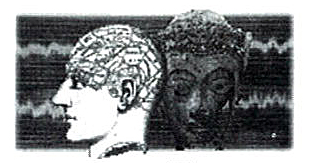Mindfulness is defined in the Oxford English Dictionary as “the state or quality of being mindful; attention; regard; memory; intention; purpose,” but it is not listed in Stedman’s Medical Dictionary. Its recent usage as a technical term in the area of Buddhist meditation, however, has breathed new life into this archaic noun. Mindfulness is fast becoming a household word as well as a key term in medicine, psychotherapy, and neuroscience.
In its classical sense, mindfulness means the ability to hold one’s full, impartial attention from moment to moment on whatever one experiences in body and mind. Although this mental muscle is natural, its function is so vital to meditative learning that its constant care is the foundation of Buddhist practice. Mindfulness practice is crucial for freeing us from the instinctive bias that normally restricts our ability to see the world more objectively. This may be why Western practitioners have used the term to designate the whole practice of “insight meditation,” in which analysis is used to liberate our natural clarity of mind from habitual blocks.
Related: The Science of Enlightenment
I am not fond of machine metaphors, but in teaching the basics of meditative self-healing, I have found them especially helpful as illustrative of the power of mindfulness. In our normal habit-driven mode, our brains are like the computer-run spaceship in Stanley Kubrick’s 2001: A Space Odyssey – however useful it is to leave routine functions on automatic pilot, when it comes to the immediate quality of our lives we must be able to shift into manual override. In mindfulness mode, we are free to deprogram and relearn the misguided habits that drive our mind and brain into self-defeating ruts.
Solid evidence for the mental and physical benefits of mindfulness are found in recent studies on stress, pain, and disease conducted by Jon Kabat-Zinn. In his Mindfulness-Based Stress-Reduction and Relaxation Program, Kabat-Zinn, himself a biochemist and a longtime Zen meditator, has distilled the essential principles of mindfulness from several traditions. His program focuses particularly on the mindfulness of breath. The technique has proven effective in helping Americans cope with a range of health problems. Eschewing the disease-targeted format of Western medicine for the more self-reliant approach of Buddhist practice, Kabat-Zinn’s program has out-performed conventional treatments for chronic pain, anxiety, and depression. He explains that mindfulness practice is effective for so many life problems because it develops a “discipline of attention” that is required to change habits.
The success of Kabat-Zinn’s program inspired Zen practitioner Dr. Marsha Linehan to apply mindfulness to one of the toughest problems in mental health: borderline personality disorder cases. Even seasoned therapists typically avoid taking on those who have been so seriously abused as children that they persist in self-injurious behavior. Building mindfulness education and skills into her Dialectical Behavior Therapy, Linnehan has achieved unprecedented success in reducing symptoms and lessening the need for continued hospitalization.
Another area where mindfulness has expanded our horizons is that of brain research. Neuroscientist Francisco Varela has shed new light in this field by drawing on his own Buddhist practice. Varela exposed a blind spot in the ongoing debate among neuroscientists, philosophers, and psychologists about how to make sense of the brain. Citing evidence that says disciplines like mindfulness make us more objective observers of our own nervous systems, he argued that all camps in the debate were missing the forest for the trees. By dissecting the brain from the outside in, Varela points out, neuroscientists have failed to see it from the inside-out, as a living tissue of active learning. He coined the term enactive neuroscience to distinguish an approach that would enhance one-sided data by gathering first-person perspectives of multiple observers experienced in mindfulness practice.
The impact of mindfulness in these diverse fields is more than enough to explain why so many people are talking and writing about it. And yet, as radical as such scientific breakthroughs may be, they only skim the profound changes I see repeatedly in my own clinical work. Recently an older gentleman, a computer analyst, spoke of having had the presence of mind to override his habitual defensive behavior at work to remain open-minded instead. He said, “This mindfulness practice has really revolutionized my work.” What makes mindfulness so potent a medicine is not the power of a single cataclysmic event, but the imperceptible way it permeates the everyday activities that shape our lives.
Thank you for subscribing to Tricycle! As a nonprofit, we depend on readers like you to keep Buddhist teachings and practices widely available.
